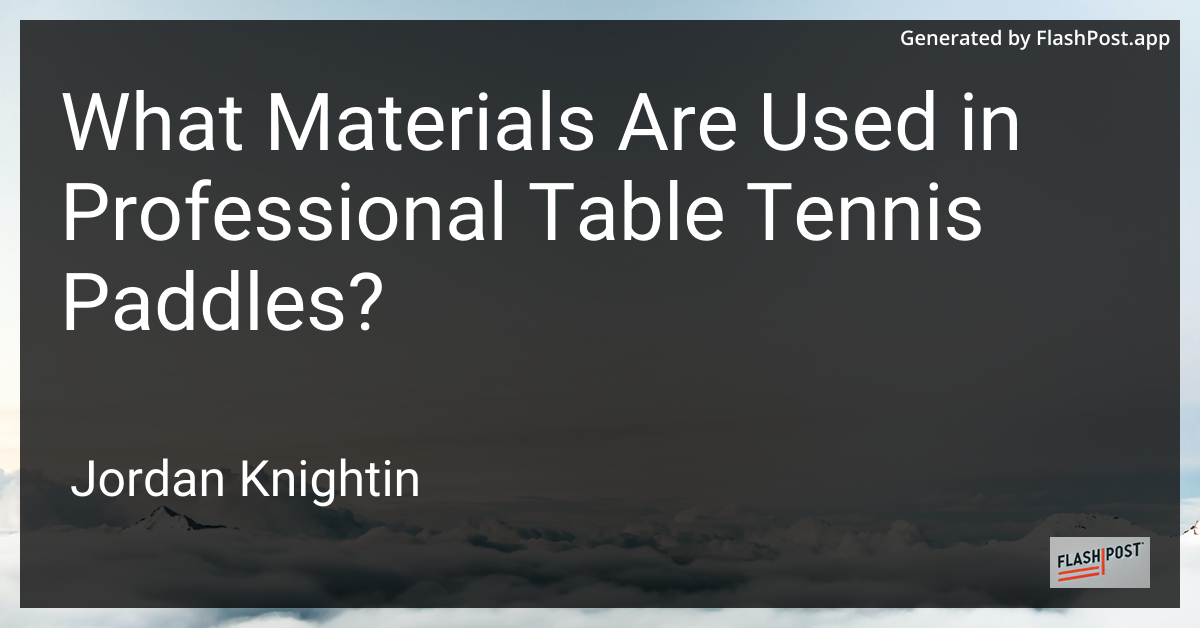

What Materials Are Used in Professional Table Tennis Paddles?
Table tennis, often referred to as ping pong, is a globally popular sport known for its fast-paced and strategic gameplay. A key component to mastering the sport is the paddle. Professional table tennis paddles are crafted with a variety of materials, each contributing to the performance, control, and speed of the game. In this article, we’ll explore the primary materials used in professional table tennis paddles and how they impact gameplay.
The Blade: A Foundation of Precision
The blade is the primary structure of the table tennis paddle and significantly affects its weight, speed, and control. Typically, the blade is constructed from multiple layers of wood, often combined with carbon or other synthetic materials. The choice of wood and layering technique can drastically alter the paddle’s characteristics.
Types of Wood
- Balsa Wood: Known for being lightweight, balsa wood offers excellent control and is often used for defensive play styles.
- Limba Wood: Offers a softer touch, providing better feel and spin capabilities.
- Hinoki Wood: Valued for its smooth finish, it enhances speed and gives a higher degree of control.
Composite Materials
- Carbon Fiber: When layered with wood, carbon fiber increases the paddle’s stiffness, allowing for greater speed and reduced weight.
- Arylate-Carbon: Combines arylate and carbon to provide both flexibilty and power, suitable for aggressive players.
The Rubber: Spin and Control
The rubber on a table tennis paddle is crucial for determining spin and speed. There are two main types of rubber surfaces used in professional paddles:
- Pimples-In (Inverted Rubber): This type of rubber has the pimpled surface on the inside, providing a smooth surface that maximizes spin and control. It is favored by many professional players for its versatile capabilities.
- Pimples-Out: Exposes the pimpled surface, creating less spin but offering better speed and unpredictable ball trajectory, ideal for defensive or all-around play.
The Sponge: The Secret Weapon
Sandwiched between the blade and the rubber, the sponge layer dramatically influences the paddle’s speed and spin. The thickness and density of the sponge determine its effects:
- Thick Sponge: Enhances speed and spin, but can reduce control. Ideal for offensive players.
- Thin Sponge: Offers greater control and is more suitable for defensive tactics and playstyles.
Conclusion
Understanding the materials used in constructing professional table tennis paddles is crucial for players aiming to refine their skills and tailor their equipment to their playing style. By considering the benefits of different woods, rubbers, and sponge combinations, players can make informed choices that enhance their gameplay.
If you’re interested in optimizing your performance in other sports as well, check out these helpful resources: How to Break in Men’s Tennis Shoes Without Discomfort, Breathable Men’s Tennis Shoes, and Clay Court Tennis Shoes 2025.
By selecting the right table tennis paddle materials, you’re already one step closer to becoming a table tennis champion. Choose wisely and play passionately!
